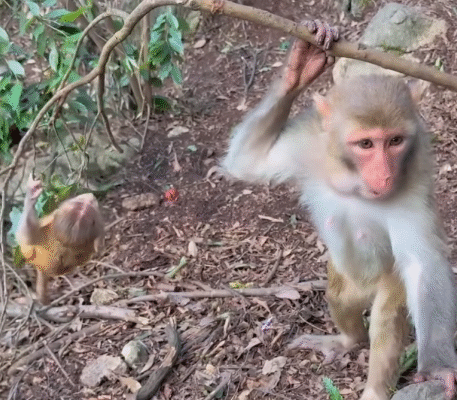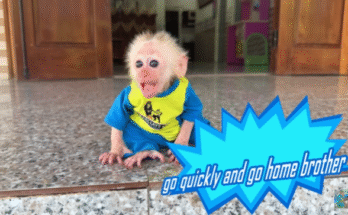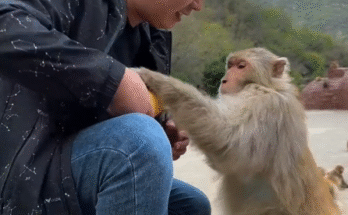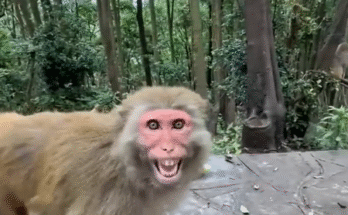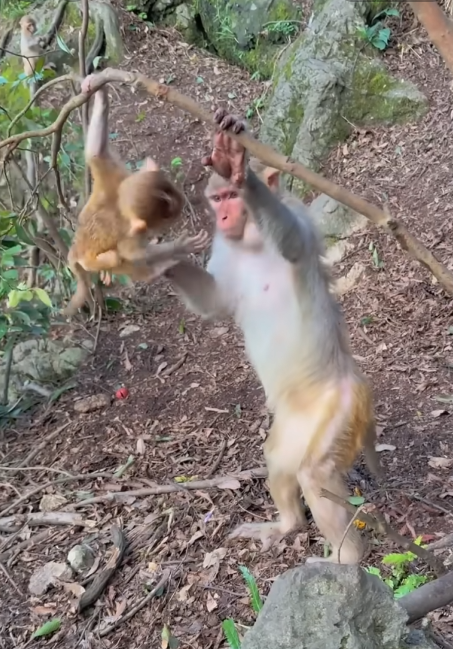
In today’s digital age, it is often the simplest things that capture the hearts of millions. Among these, monkey videos have emerged as a surprising but compelling phenomenon. From mischievous antics in the jungle to playful interactions in wildlife sanctuaries, these videos do more than just entertain—they reveal the power of storytelling in the smallest, most everyday moments. Each clip, no matter how brief or seemingly trivial, tells a story that resonates universally, showing that narrative doesn’t always require words, elaborate scripts, or cinematic production.
Consider a clip of a baby monkey cautiously approaching a puddle for the very first time. The monkey dips a tiny foot into the water, recoils in surprise, then peers around as if asking, “Is it safe?” A pause. Another tentative step. A sudden splash. This simple sequence is a story: of curiosity, hesitation, and discovery. Without a single spoken word, the viewer becomes emotionally invested, rooting for the tiny protagonist while marveling at the courage required for such a small adventure. Millions of viewers have shared and re-shared similar videos, proving that the appeal of such narratives lies in their relatability. We see in the baby monkey a reflection of our own first attempts at learning something new, of moments when hesitation meets boldness.
What makes monkey videos particularly compelling is the combination of humor, innocence, and unpredictability. A capuchin monkey stealing a tourist’s sunglasses or a group of monkeys engaging in a chaotic chase through the trees becomes a narrative of mischief, cunning, and surprise. Each action, reaction, and interaction builds a mini-story, with the monkey as both hero and trickster. In this sense, the viral nature of these videos demonstrates that storytelling does not need to be linear or complex. It can be episodic, playful, and spontaneous, yet still connect with viewers at a deep emotional level. A two-minute clip can have a beginning, middle, and end: setup, conflict, and resolution, all captured in a burst of natural behavior.
One fascinating aspect of viral monkey videos is their capacity to evoke empathy. Observing monkeys interact socially—grooming, playing, or comforting one another—provides a narrative of connection and community. A video showing an older monkey patiently guiding a younger one through a jungle obstacle course tells a story about mentorship, patience, and the bonds that form through shared experience. These narratives resonate with humans because they mirror our own social structures and emotional experiences. Viewers find themselves invested in the monkeys’ relationships, cheering for successes and cringing at minor mishaps, much like they would in any well-crafted story.
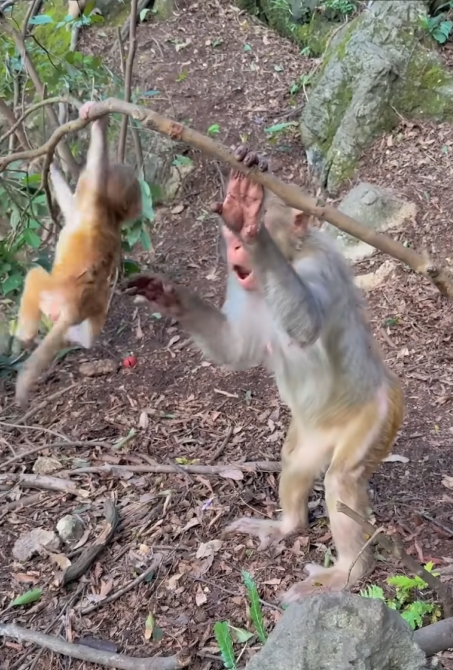
The educational value of these everyday narratives cannot be understated. While entertainment is the initial draw, monkey videos often impart subtle lessons about behavior, intelligence, and social dynamics. Videos of monkeys using tools to access food, for instance, tell a story of problem-solving and ingenuity. One viral clip shows a monkey stacking rocks to reach a high-hanging fruit, pausing mid-task to carefully adjust each stone for stability. This sequence is a visual narrative of planning, persistence, and adaptation, all communicated without dialogue. By combining humor, cuteness, and intellect, such videos engage audiences in learning about nature and behavior in an organic and memorable way.
Moreover, monkey videos highlight the power of emotional storytelling through visual cues. Facial expressions, body language, and vocalizations are narrative tools as potent as words. A tiny monkey pouting after being denied a treat, or a troop collectively reacting to a sudden noise, conveys emotions like disappointment, surprise, or joy. Each clip becomes a micro-drama, where viewers intuitively understand the stakes, characters, and outcomes. These visual stories are universally accessible; they transcend language, age, and cultural barriers, making monkey videos some of the most shareable content on social media.
The brevity of viral monkey videos further emphasizes the effectiveness of storytelling in small moments. Unlike films or novels that require time and extensive development, a thirty-second clip of a monkey sneezing unexpectedly or slipping into a puddle can communicate humor, tension, and resolution in less than a minute. The compactness forces storytellers—whether they are the monkeys themselves or the videographers capturing their antics—to convey narrative efficiently. It’s a reminder that a powerful story doesn’t require length or complexity, just a relatable conflict and an emotionally satisfying outcome.
Another key factor in the viral spread of these videos is relatability. Monkeys mirror human behaviors in ways that are often exaggerated yet familiar: mimicking expressions, playing games, or exhibiting stubbornness. A video showing a monkey attempting to balance on a tight rope, wobbling precariously, and ultimately tumbling down evokes laughter because it mirrors the awkwardness of human attempts at new challenges. In these moments, viewers recognize themselves in the narrative, enhancing the emotional impact and increasing the likelihood of sharing the video. Humor, vulnerability, and triumph—all elements of compelling storytelling—are present in abundance.
The context in which monkey videos are consumed also contributes to their storytelling power. Social media allows viewers to engage with these narratives collectively, adding commentary, captions, or personal interpretations. A simple clip becomes layered with meaning: a monkey hiding behind a tree might be dubbed “The Master of Sneak Attacks,” or a group of playful siblings could be called “The Jungle Trouble Trio.” These community-driven interpretations turn raw footage into a rich narrative experience, where everyday moments are transformed into shared stories that entertain, educate, and connect people worldwide.
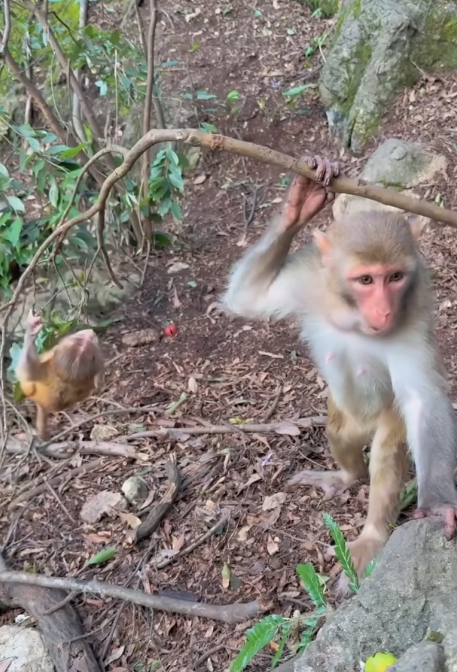
Importantly, the viral nature of monkey videos demonstrates that storytelling is not confined to the extraordinary or dramatic. Everyday moments—a playful chase, a clumsy fall, a tender grooming session—can be as engaging as epic tales if they evoke emotion and connect with the audience. The monkeys’ antics show us that life itself is a series of mini-stories waiting to be observed and appreciated. Humor, mischief, curiosity, and tenderness are universal themes that resonate regardless of species, reminding viewers that narrative potential exists in the ordinary.
Finally, monkey videos exemplify how storytelling can create empathy and understanding. By observing the small, everyday behaviors of monkeys, viewers learn to see the world through another perspective, to appreciate intelligence, emotion, and individuality in non-human animals. These micro-narratives foster compassion and curiosity, transforming fleeting amusement into a deeper awareness of the natural world. Each shared clip becomes a small ambassador for wildlife, bridging the gap between humans and animals through the universal language of story.
In conclusion, the viral popularity of monkey videos underscores the extraordinary power of storytelling in small, everyday moments. Whether it’s a baby monkey learning to navigate its environment, a mischievous capuchin causing chaos, or a troop displaying social bonds, these clips convey narratives that are humorous, touching, and profoundly relatable. They remind us that stories do not need grandiose settings, complex plots, or lengthy exposition—sometimes, all it takes is a tiny act of curiosity, a moment of playfulness, or an unexpected mishap to tell a tale that captures hearts worldwide.
Monkey videos teach us that storytelling is everywhere—in the swing of a tail, the blink of an eye, the mischievous grin of a baby macaque. By capturing these small moments and sharing them with the world, creators highlight the universality of narrative: the human desire to laugh, to empathize, to celebrate intelligence and mischief, and to find meaning in even the most ordinary moments. The viral nature of these videos is proof that the best stories are not always epic—they are lived, observed, and shared, one adorable, funny, and relatable moment at a time.
